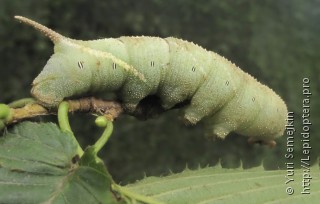Photo #10217: Sphingidae sp.
Larva

Click image to enlarge
Base gallery.
Photo, and identified by: Yuri Semejkin. Image redone at the website
Date and time, location shooting/catching: 2011-08-06 00:00:00, Near Vladivostok
Photographer's comment: A Sphingidae caterpillar?Comments on this image
Your comment
Please, create an account or log in to add comments.
Other photos Sphingidae sp.






All large size images of Sphingidae sp. on one page
Please, create an account or log in to upload your photo
News
If you are not Molbiol user, just ignore the message below:
Пользователи Молбиола, перейдите на русскую версию сайта, чтобы прочесть об интеграции Инсекты с энтомологической частью Молбиола и о копировании форума на Инсекту.
- 22.05.2024: Еще одна цветовая схема
- 14.05.2024: Выложен первый полностью функциональный раздел перенесенного форума
- 09.04.2024: Recognition of species/taxa by file names of uploaded photos has become more convenient
New photos (25.07.2024)
Fresh from the community
- 11:28, N. Grebennikov: Ophion luteus (Linnaeus, 1758)....
- 11:27, P. Khramov: Not identified → Deilephila elpenor...
Popular insects
Recommended blog topics
- Meanwhile, at the "Reptilium"
- A. Gordon, O. Gorbunov, V. Murzin on Russian TV in 2004
- Meanwhile, in Kotelnich
- North America's largest indoor butterfly pavilion to be opened in the Salt River Reservation












